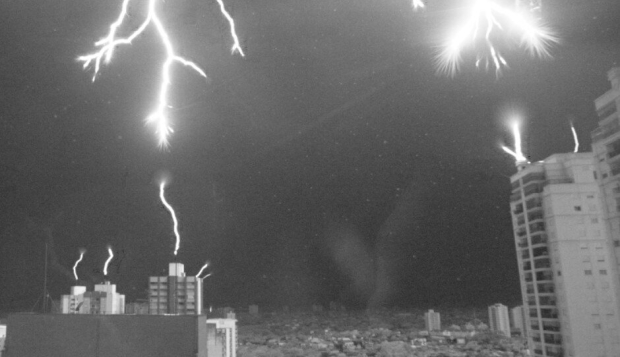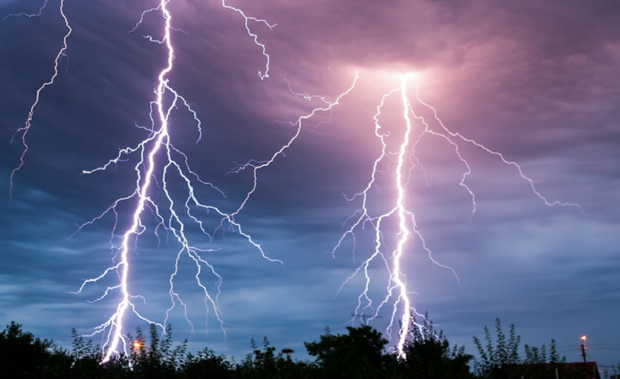Marcelo Saba, a researcher at Brazil's National Space Research Institute (INPE), and Ph.D. candidate Diego Rhamon managed to snap an incredibly unique shot of lightning rods doing what they do best.

The image was published as the cover photo for the December 28, 2022, issue of Geophysical Research Letters, and reports explain that a camera capable of capturing 40,000 individual frames per second was used to shoot it. Notably, Saba was the first author on that biweekly release of the scientific journal and explained the image was taken on a summer evening in Sao Jose dos Campos and shows a negatively charged bolt heading toward the ground at nearly 230 miles (370 km) per second.
Several feet before it reaches the ground, the tops of buildings and lightning rods produce a positive upward discharge that competes with the downward strike of the lightning. The above image was taken from a video that was played back in slow motion and was captured at 25 thousandths of a second right before the lightning was about to one of the buildings. The area contains more than 30 lightning rods on the top of the buildings, and the image showcases the importance of having a lightning rod protection system correctly installed.
"A flaw in the installation left the area unprotected. The impact of a 30,000-amp discharge did enormous damage," said Saba.
Reports indicate that, on average, 20% of all lightning strikes involve an exchange of electrical discharges from the ground and the clouds. The remaining 80% of lightning strikes occur within clouds. Saba explains that lightning strikes can stretch 62 miles and transfer as much as 30,000 amps, which is the equivalent of running 30,000 100-watt light bulbs. There have been cases of lightning strikes being recorded reaching 300,000 amps, with typical lightning bolt temperatures being around 54,032 degrees Fahrenheit, or five times the surface temperature of the Sun.
How does lightning even exist? The simple answer is friction forming between different particles, such as ice, water droplets, and hail. Each releases a small charge that creates polarities between different areas of the cloud. When electrical charges are created, a strike forms, and it takes the path of least resistance through the atmosphere of the cloud. Typically this path is zigzag-like as not all parts of the cloud contain the same electrical charge, leading to the lightning strike sometimes taking strange routes.
A lightning rod provides a lightning strike with an easy and safe route to the ground. It's commonly believed that lightning rods "attract," "repel, or even, "discharge" lightning strikes. Saba says this isn't true, and lightning rods simply give lightning strikes a direct route to where they want to go, the ground.



